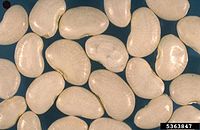
Supplementary food for Neoseiulus californicus boosts biological control of Tetranychus urticae on strawberry.
Sign Up to like & getrecommendations! Published in 2019 at "Pest management science"
DOI: 10.1002/ps.5312
Abstract: BACKGROUND A wide range of supplementary food resources can be offered to generalist predatory mites to improve their survival and reproduction and enhance their persistence in the environment. We investigated the relative suitability of different… read more here.
Keywords: tetranychus urticae; neoseiulus californicus; californicus; supplementary food ... See more keywords

Density threshold-based acaricide application for the two-spotted spider mite Tetranychus urticae on cassava: from laboratory to the field.
Sign Up to like & getrecommendations! Published in 2019 at "Pest management science"
DOI: 10.1002/ps.5366
Abstract: BACKGROUD The red spider mite Tetranychus urticae is known as a worldwide pest in cassava production which can caused serious economic losses. Because no threshold levels are established for T. urticae in cassava cropping, many… read more here.
Keywords: tetranychus urticae; spider mite; field; urticae cassava ... See more keywords

Transcriptome profiling and functional analysis suggest that the constitutive overexpression of four cytochrome P450s confers resistance to abamectin in Tetranychus urticae from China.
Sign Up to like & getrecommendations! Published in 2020 at "Pest management science"
DOI: 10.1002/ps.6130
Abstract: BACKGROUND The two-spotted spider mite Tetranychus urticae is a polyphagous and cosmopolitan pest that has developed high resistance to abamectin, making it difficult to control. Although "target resistance" related to GluCl mutations was found in… read more here.
Keywords: tetranychus urticae; china; resistance; transcriptome profiling ... See more keywords

Activity, selection response and molecular mode of action of the isoxazoline afoxolaner in Tetranychus urticae.
Sign Up to like & getrecommendations! Published in 2022 at "Pest management science"
DOI: 10.1002/ps.7187
Abstract: BACKGROUND Afoxolaner is a novel representative of the isoxazolines, a class of ectoparasiticides which has been commercialised for the control of tick and flea infestations in dogs. In this study, the biological efficacy of afoxolaner… read more here.
Keywords: afoxolaner; tetranychus urticae; mode action; molecular mode ... See more keywords

Mineral and organic fertilization affects Tetranychus urticae, pseudofruit production and leaf nutrient content in strawberry
Sign Up to like & getrecommendations! Published in 2019 at "Phytoparasitica"
DOI: 10.1007/s12600-019-00744-z
Abstract: The aim of this study was to evaluate the population of Tetranychus urticae Koch (Tetranychidae – twospotted spider mite - TSSM) submitted to mineral fertilizer or crescent doses of organic compost (OC) and find its… read more here.
Keywords: tetranychus urticae; fertilization; production; higher tssm ... See more keywords

Comparative bioactivity of essential oils from two Mentha pulegium (Lamiaceae) chemotypes against Aphis gossypii, Aphis spiraecola, Tetranychus urticae and the generalist predator Nesidiocoris tenuis
Sign Up to like & getrecommendations! Published in 2019 at "Phytoparasitica"
DOI: 10.1007/s12600-019-00770-x
Abstract: Essential oils of Mentha pulegium (Lamiaceae) have shown a high potential for use in pest control. In the present study we examined the comparative potential of the M. pulegium essential oils representing pulegone (EO1) and… read more here.
Keywords: tetranychus urticae; control; pulegium lamiaceae; mortality ... See more keywords

Efficacy of some pesticides against Tetranychus urticae Koch (Acari: Tetranychidae) and their residual effects on Coccinella septempunctata (L.) (Coleoptera: Coccinellidae)
Sign Up to like & getrecommendations! Published in 2021 at "International Journal of Tropical Insect Science"
DOI: 10.1007/s42690-021-00581-w
Abstract: Pesticides are used to control Tetranychus urticae Koch populations in country bean, Dolichos lablab (L.). The results of using pesticides are more predictable if there is detailed information about their toxicity and specificity. In particular,… read more here.
Keywords: urticae koch; toxicity; tetranychus urticae; mortality ... See more keywords

Synergism to acaricides in resistant Neoseiulus californicus (Acari: Phytoseiidae), a predator of Tetranychus urticae (Acari: Tetranychidae)
Sign Up to like & getrecommendations! Published in 2018 at "Crop Protection"
DOI: 10.1016/j.cropro.2017.12.026
Abstract: Abstract Tetranychus urticae Koch is one of the most important phytophagous mite species worldwide, and Neoseiulus californicus (McGregor) is the main predatory mite species marketed for control of this pest in Brazil. The present study… read more here.
Keywords: tetranychus urticae; neoseiulus californicus; californicus; resistance ... See more keywords

QTL mapping using microsatellite linkage reveals target-site mutations associated with high levels of resistance against three mitochondrial complex II inhibitors in Tetranychus urticae.
Sign Up to like & getrecommendations! Published in 2020 at "Insect biochemistry and molecular biology"
DOI: 10.1016/j.ibmb.2020.103410
Abstract: The acaricides cyflumetofen, cyenopyrafen, and pyflubumide act as inhibitors of the mitochondrial electron transport system at complex II (succinate dehydrogenase; SDH), a new mode of action in arthropods. The development and mechanisms of low-level resistance… read more here.
Keywords: tetranychus urticae; high levels; qtl; linkage ... See more keywords

Mechanisms of resistance to three mite growth inhibitors of Tetranychus urticae in hops
Sign Up to like & getrecommendations! Published in 2017 at "Bulletin of Entomological Research"
DOI: 10.1017/s0007485317000414
Abstract: Abstract Mite growth inhibitors (MGIs), such as etoxazole and hexythiazox, are valuable IPM tools for Tetranychus urticae control in hops due to their unique mode of action and selectivity. Hence, it is necessary to standardize… read more here.
Keywords: mite growth; tetranychus urticae; growth inhibitors; urticae populations ... See more keywords

Effects of photoperiod on development and demographic parameters of the predatory thrips Scolothrips longicornis fed on Tetranychus urticae.
Sign Up to like & getrecommendations! Published in 2020 at "Bulletin of entomological research"
DOI: 10.1017/s0007485320000115
Abstract: The effect of five photoperiods (0:24, 6:18; 12:12, 18:6, and 24:0 light:dark (L:D)) on the development, reproduction, and survival of the predatory thrips Scolothrips longicornis Priesner fed on the two-spotted spider mite, Tetranychus urticae Koch,… read more here.
Keywords: scolothrips longicornis; development; thrips scolothrips; predatory thrips ... See more keywords